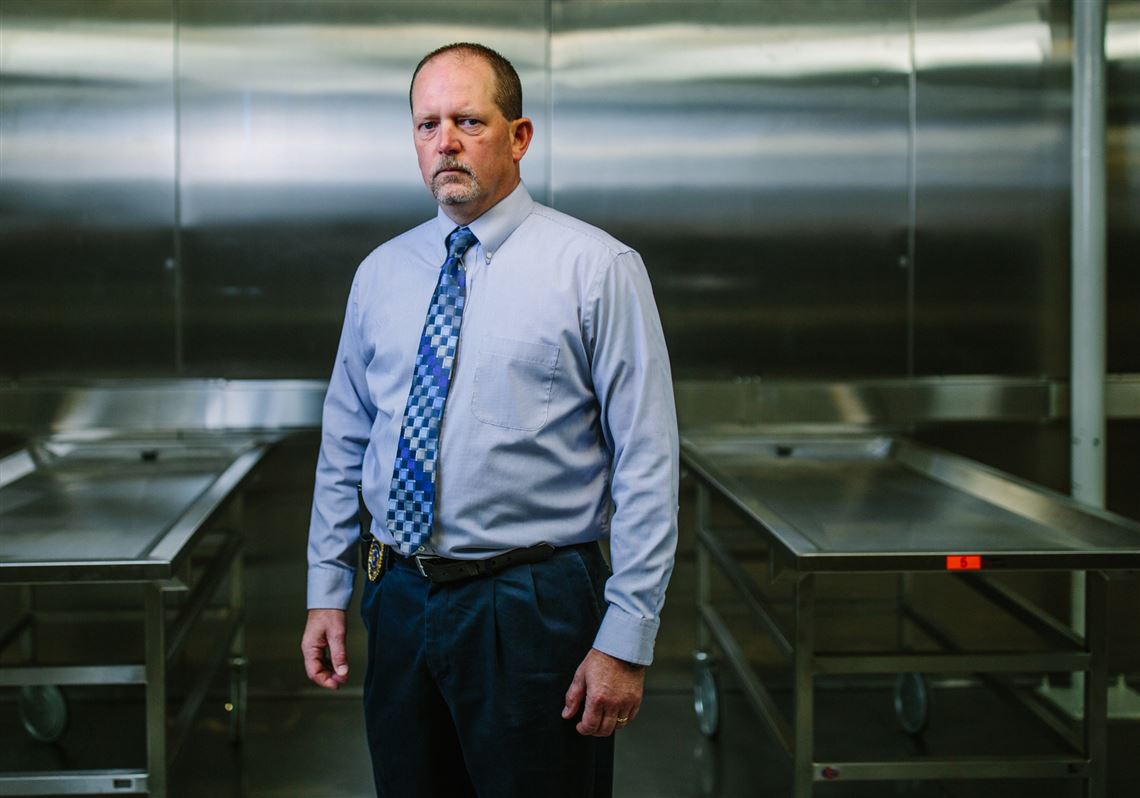In more than 150 interviews with recovering addicts from Westmoreland County, professor Eric Kocian and 17 students didn’t find one person who tried heroin for fun.
“I don’t remember anybody that we interviewed that used heroin as some type of party experience,” said Mr. Kocian, an assistant professor of sociology and anthropology at St. Vincent College in Latrobe. Instead they started “using heroin when their prescription meds basically ran out, or their source dried up, or they couldn’t afford [pills] on the street.”
He’s not surprised that this year, as the black market for pills tightens, users in the county are dying in record numbers.
“While we definitely need to do something to get these prescriptions under control, and I think we’re taking steps in the right direction, for sure, I worry about the current population that is addicted to prescription medications and that may be moving much more quickly to heroin,” he said Tuesday, after the county coroner announced a drug death tally that already exceeds last year’s record.
Following five fatal overdoses from Friday through Sunday, Coroner Kenneth Bacha released a tentative total, through Tuesday, of 130 drug deaths. That’s beyond the toll of 126 from 2015, which in turn shattered the then-unprecedented 87 in 2014.
In three out of every five fatal overdoses for which toxicology tests were finished, heroin or fentanyl were the culprits, said Mr. Bacha. Last year, prescription opioids caused the bulk of deaths.
The shift comes amid state and federal efforts to tamp down the prescribing of prescription opioids.
Today Gov. Tom Wolf is expected to sign bills that will limit prescribing of opioids to minors and by emergency room personnel; demand that medical schools teach the pros and cons of painkillers; compel doctors to take refresher courses in that topic; and require that prescribers check a patient drug history database every time they recommend powerful narcotics. That database was launched in August, and some doctors are now balking at prescribing opioids.
The tragic side effect of the culture change is evident at the coroner’s office.
"When you start making an impact on the prescription medications, and opiates in particular, they are going to get harder to get and more expensive, and the opiate people will go to heroin," Mr. Bacha said.
"I think this is a pivotal point in our battle," he said. "Ignoring [painkiller abuse] is not going to make it go away. … Hopefully we get the bull by the horns and get it turned back our way."
Boosting the body count are the increasing potency of heroin, the addition of fentanyl to many batches, and the appearance of stamp bags of pure fentanyl. Mr. Bacha said his office found 17 times the usual fatal dose of fentanyl in one body.
The Westmoreland Drug and Alcohol Commission is scrambling to get the county's drug treatment hotline number (1-800-220-1810) and the anti-overdose drug naloxone into as many hands as possible.
The commission's executive director, Colleen Hughes, said the county finally got some inpatient rehabilitation services last month, with the opening by Gateway Rehab of a 16-bed facility in Mount Pleasant. Still, she said, "Westmoreland County doesn't have the full continuum of care." For instance, there's as yet no addiction-focused halfway house, she said.
Mr. Kocian said he and his students are still analyzing the data from their interviews, so they can issue a report with recommendations, but he knows enough to worry about county residents with pain pill habits.
“Unfortunately, for those people that are in that situation right now,” he said, “it’s going to take a little luck and a lot of prayers.”
Rich Lord: rlord@post-gazette.com or 412-263-1542.
First Published: November 1, 2016, 5:08 p.m.




















